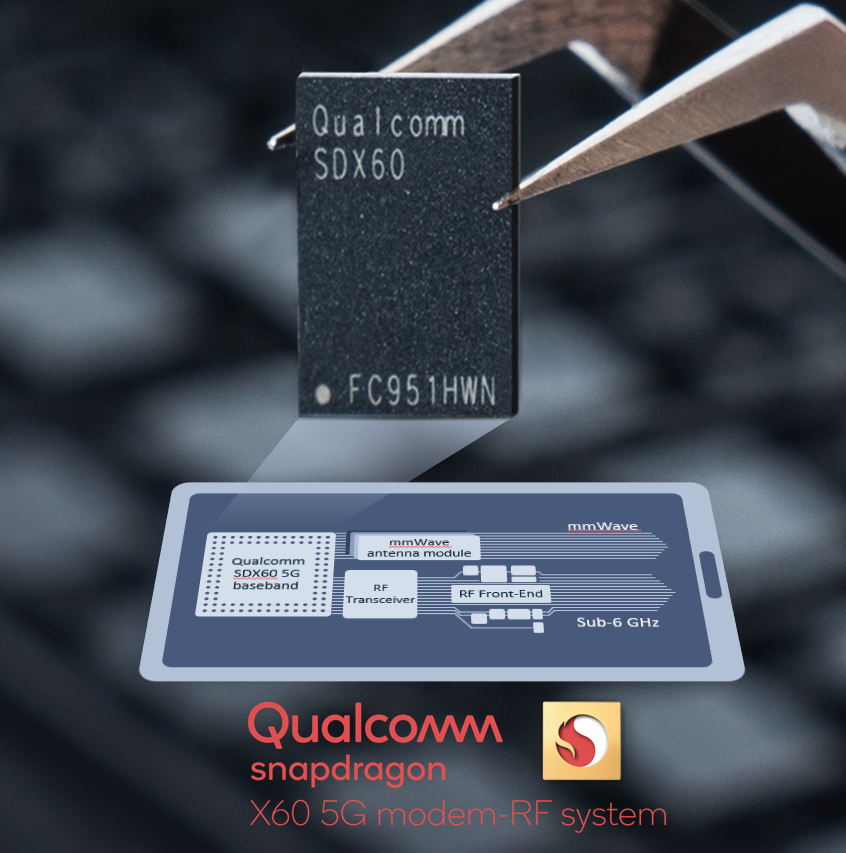
E’ stato annunciato oggi il nuovo Qualcomm X60, modem 5G di nuova generazione che avvia la transizione verso il 5G nel suo formato “stand alone”.
Sul tema del 5G ci sono informazioni frastagliate e spesso molto confuse, in particolare quando si parla di tipologia delle trasmissioni e di frequenze utilizzate per la diffusione del servizio.
In primo luogo bisogna fare una differenza tra lo standard 5G in versione non stand alone e quella stand alone: la prima è il risultato della aggregazione di canali, che portano ad un aumento della velocità, usando le infrastrutture del 4G.
La seconda, invece, è la versione in cui le infrastrutture usate sono esclusivamente 5G, con un ulteriore aumento della velocità.
C’è poi un altro tema, quello del DSS, lo condivisione dinamica dello spettro, che permette di irradiare contemporaneamente servizi 4G e 5G, con il dispositivo ricevente che seleziona quale accogliere dalla stazione base.
Il nuovo modem Qualcomm X60 migliora l’efficienza della ricezione e riduce l’impatto della batteria.
L’antenna di questo nuovo modem è in grado di gestire velocità in download di 7.5 gbps e di 3 gbps in upload.
La distribuzione è prevista per il quarto dell’anno, cioè praticamente subito.

Qualcomm X60, il comunicato ufficiale
Qualcomm Technologies, Inc. today announced the Snapdragon X60 5G Modem-RF System, its third-generation 5G modem-to-antenna solution (the Snapdragon X60).
Snapdragon X60 features the world’s first 5-nanometer 5G baseband and is the world’s first 5G Modem- RF System to support spectrum aggregation across all key 5G bands and combinations, including mmWave and sub-6 using frequency division duplex (FDD) and time division duplex (TDD), providing ultimate operator flexibility to uplift 5G performance utilizing fragmented spectrum assets.
This 5G modem-to-antenna solution is designed to enhance the performance and capacity for operators worldwide while increasing average 5G speeds in mobile devices.
Snapdragon X60 is engineered to accelerate network transition to 5G standalone mode through support for any key spectrum band, mode or combination, along with 5G Voice-over-NR (VoNR) capabilities.

The Snapdragon X60 also features the new Qualcomm® QTM535 mmWave antenna module, engineered for superior mmWave performance.
QTM535, the company’s third-generation 5G mmWave module formobile, features a more compact design than the previous generation which allows for thinner, sleeker smartphones.
“Qualcomm Technologies is at the heart of 5G launches globally with mobile operators and OEMs introducing 5G services and mobile devices at record pace.
As 5G standalone networks are introduced in 2020, our third-generation 5G modem-RF platform brings extensive spectrum aggregation capabilities and options to fuel the rapid expansion of 5G rollouts while enhancing coverage, power efficiency and performance for mobile devices.
We are excited about the fast adoption of 5G across geographies and the positive impact 5G is having on the user experience,” said Cristiano Amon, president, Qualcomm Incorporated.
Snapdragon X60 allows for fiber-like internet speeds and low latency, delivered wirelessly over 5G, which will help unlock the next generation of connected applications and experiences, from highly responsive multiplayer gaming and immersive 360-degree video to connected cloud computing – all with the superior power efficiency for all-day battery life*.
Building on the success of the industry-leading Snapdragon X50 and X55 5G Modem-RF Systems, the Snapdragon X60 is the world’s first to support mmWave-sub6 aggregation allowing operators to maximize their spectrum resources to combine capacity and coverage.
Additionally, the Snapdragon X60 contains the world’s first 5G FDD-TDD sub-6 carrier aggregation solution, in addition to supporting 5G FDD-FDD and TDD-TDD carrier aggregation, along with dynamic spectrum sharing (DSS), allowing operators a wide range of deployment options – including the ability to repurpose LTE spectrum for 5G – to effectively deliver higher average network speeds and accelerate 5G expansion.
This 5G modem-to- antenna solution can deliver up to 7.5 gigabits per second (Gbps) download speeds and 3 Gbps upload
speeds, and the aggregation of sub-6 GHz spectrum in standalone mode allows the doubling of peak data rates in 5G standalone mode compared to solutions with no carrier aggregation support.
VoNR support in Snapdragon X60 will be an important step in the global mobile industry’s transition from non- standalone to stand-alone mode, as it will allow mobile operators to provide high-quality voice services on 5G NR.
Qualcomm Technologies is scheduled to ship samples of Snapdragon X60 and QTM535 in the first quarter of 2020, with commercial premium smartphones using the new Modem-RF System expected in early 2021. For more information, visit the Snapdragon X60 Modem-RF System product page.



